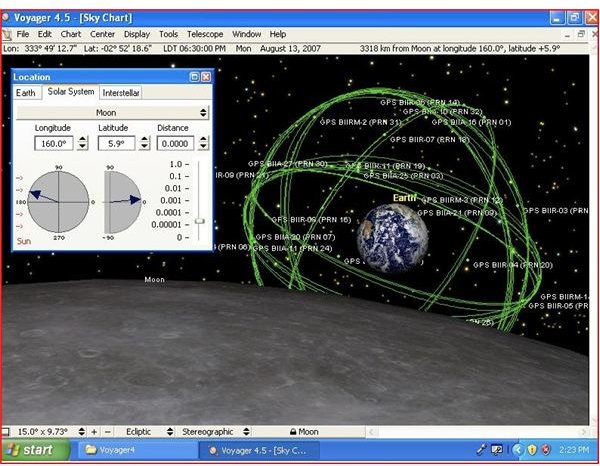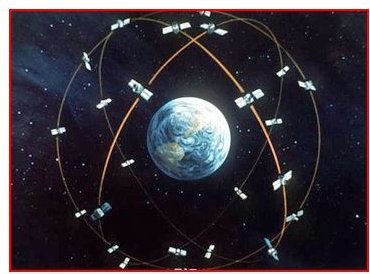GPS Satellite Orbit Patterns Explained - Understanding GPS Satellites
What Is Going On Up There?
GPS satellite orbit operations are a rather fascinating subject when you stop and think about how complex it must be to ensure that they actually work correctly. So many variables must fall into place and any necessary repairs would cost billions just to get to the job site. When you’re outside on a clear, star-filled night and see one of those stars moving across the sky, could that be one of the satellites that is instructing your GPS device about where it is located? That’s quite probable, but it could be a whole lot of other things too, the more you let your imagination run wild.
As you may or may not know, your GPS receiver needs at least three satellites up there to determine its position, due to the spherical shape of the signal emitted from satellites which is discussed it greater detail in A Brief History of GPS. There are 24 satellites up there now, and since they didn’t all get up there at the same time, we can rest assured they won’t fall to earth and disable our navigational abilities so that we must learn what our ancient ancestors knew about navigating using the real stars, not the moving ones.
Layers of Location - Finding Abilities in Orbit
These satellites provide two layers of service that benefits our receivers no matter what vehicles, planes, or humans they are presently riding on. The first is known as Standard Positioning Service (SPS) and it will provide horizontal accuracy to within 100 meters, vertical accuracy to within 140 meters, and timing accuracy to within 340 nanoseconds. Fortunately, they are accurate enough to find and rescue outdoor adventurers and boaters alike, after an emergency if they were carrying a GPS Personal Locator Beacon with them.
The second layer is known as Precise Positioning Service (PPS) and it is for military purposes, and therefore more accurate, because the American military put the satellites up there in the first place. The best (especially the most lethal aspects) of technology begin with the military because humans always gravitate toward belonging to larger groups, and there is forever various and sundry reasons why one group should kill members of the other group with the newest gadgets and tools available. Humans are tragically flawed in a thousand different ways, mostly stemming from fear, but I digress. But at least we know where we’re at now thanks to GPS technology.
Orbital Bliss
Up there in space, where the humans haven’t had an opportunity to kill each other yet, each GPS satellite orbits the earth twice every time the earth rotates once. Therefore, a satellite will repeat the same orbit twice a day, but obviously observers can only witness that when it’s night time. So we have to take the scientists word on that. We refer to big GPS orbital picture (meaning all 24 moving in sequence) as the GPS constellation, despite its lack of originality. They are divided into six different orbital planes with each plane inclined 55 degrees to the equator. The image to the right, courtesy of GPS Magazine, gives you an idea of the orbital positioning.
In order to achieve the two orbits twice a day, scientists correctly calculated that they needed to be placed at an altitude of 20,200km. The satellites are equipped with thrusters that are used to ensure that they’re in the

right place if they wander off the path from time to time. So, unfortunately, there are no sensational collisions going on up there that might be caught on tape. For some very precise information about the exact orbital trajectories for each satellite (at any given time), along with diagrams that explain how they are plotted, visit Wolfram Research.
Carina Software is fantastic software to use for viewing the heavens, as you can see from this great image from the perspective of the moon. Now you know the basics of how those satellites orbit so that you can better navigate down here. Look to Bright Hub’s GPS & Navigation channel for reviews and information on virtually all GPS categories, makes, and models.
